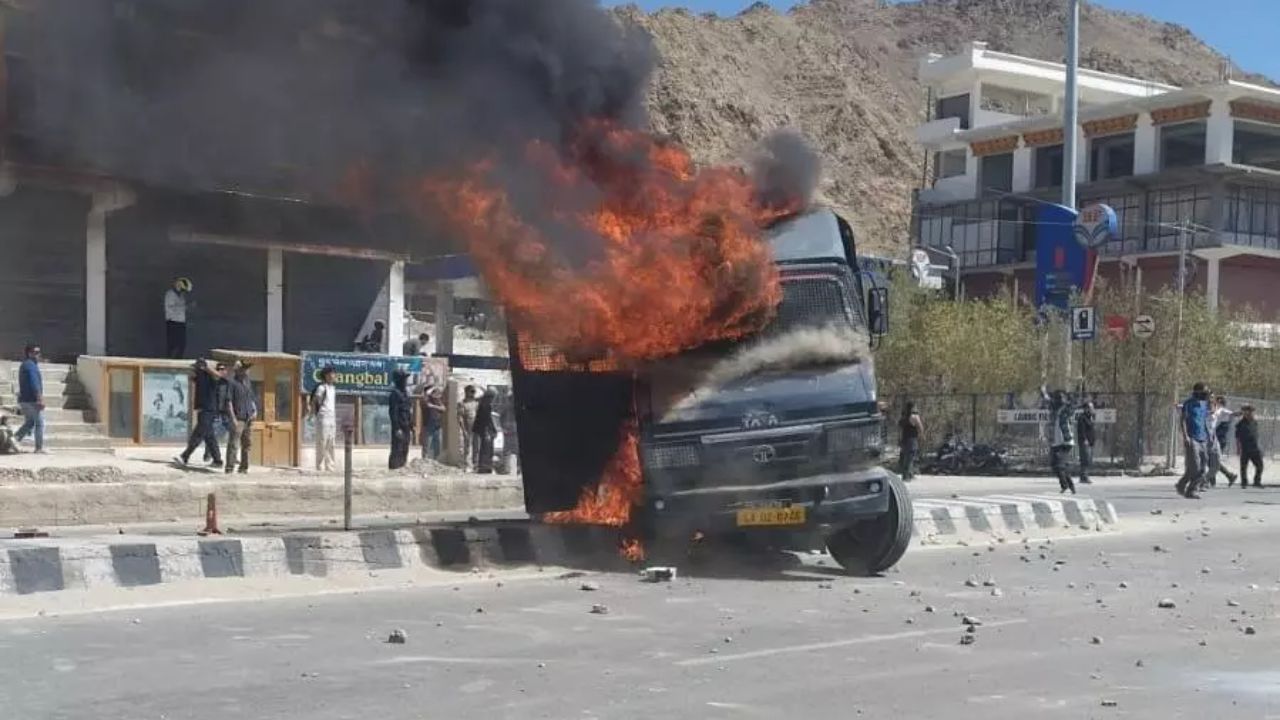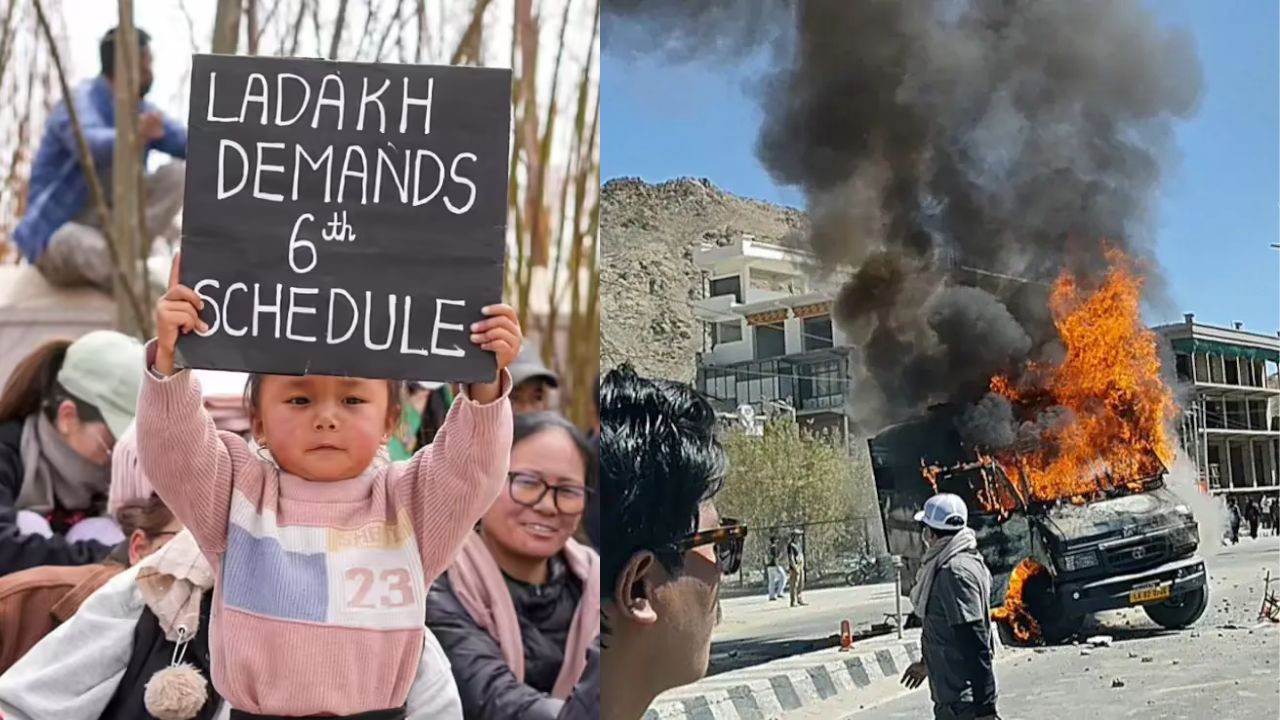 English
English

The people of Ladakh have been demanding two things: statehood and inclusion in the Sixth Schedule. But the question arises — apart from statehood, why are they demanding inclusion in the Sixth Schedule?

Demand for statehood intensifies
Leh: A recently peaceful protest in Ladakh turned violent on Wednesday when protesters pelted stones and set fire to a BJP office in Leh. At least four protesters are reported dead in the clashes. The protest is demanding constitutional protection and full statehood for Ladakh under the Sixth Schedule.
Main Demands
Ladakh Protest Turns Violent: 4 Dead, Dozens Injured Amid Statehood Demand
Protesters say that Ladakh was carved out of Jammu and Kashmir in 2019 and made a Union Territory, but now they want self-governance and local rights so that they can decide on their own social, cultural, and land-related matters.
The Sixth Schedule of the Constitution deals with the administration of tribal areas like Assam, Meghalaya, Tripura, and Mizoram. Under this:
Autonomous District Councils (ADCs) are special governing bodies created in certain tribal areas of India (mainly in the Northeast) under the Sixth Schedule of the Constitution. Their purpose is to give local self-governance to tribal communities and protect their unique culture, land, and way of life.

Protest in Ladakh turns violent
1. Councils Are Formed
Autonomous District Councils are set up in tribal areas to govern themselves with more freedom than regular districts.
2. They Have Law-Making Powers
These councils can make laws on important local matters, such as:
Local administration (how the area is managed)
Law and order (basic rules and safety)
Land (who owns land, how it's used, and protecting it from outsiders)
Natural resources (like forests, water, minerals)
These powers help the tribal communities protect their land and identity.
3. Composition of the Council
Each District Council can have up to 30 members:
4 members are nominated by the Governor of the state.
The remaining 26 members are elected by the local people.
These elected members are chosen through adult suffrage, meaning every adult (18+) has the right to vote in the elections for the council.
Ladakh has a large tribal population. Local people say that their economic, social, and cultural rights are at risk after becoming a Union Territory. They want the protections under the Sixth Schedule that are given to other northeastern states.
A meeting between the central government and the Leh Apex Body (LAB) and the Kargil Democratic Alliance (KDA) is scheduled for October 6. But the government unilaterally set this date, further fueling anger among the youth. This is what led to the movement turning violent.
Gen-Z Protests Intensify in Ladakh Demanding Statehood and Sixth Schedule Inclusion
Yes, the Indian Parliament can amend this schedule from time to time. Any amendment by Parliament will only validate the Sixth Schedule in the Constitution in its amended form.
The anger of Ladakh's youth is not a one-day incident, but the result of years of ignored demands and an identity crisis. They want constitutional protection for their tribal identity, culture, and resources, and administrative rights.
It will be important to see what stance the central government takes on these demands at the October 6 meeting and whether any concrete steps will be taken towards including Ladakh in the Sixth Schedule.
No related posts found.